This article from history gives us more understanding and in sight in the role of the US, Britain and the USSR played during the Cold War Crisis related to the Oil industry in Iran and the Middle East (1950-1953). In an effort to balance the powers and to control the Nationalist movement in Iran (and the oil), they also endorsed and sponsored Islamic Fundamentalism. Not anticipating that the danger coming from a Radicalized Islam would be far greater for the Western Societies than Nationalist movements. Thus ultimately resulting in the Iranian Islamic Revolution (1979) and the hostage taking of the US embassy in Tehran. And today we have an Iran with Islamic demonic leadership and in due time the capability of making nuclear weapons.
We have also published an article in which the CIA plot on the 1953 overthrow of Mossadegh is denied: CIA and Iran – Zahedi’s version.
—
The CIA in Iran
–
…The Shah requires special preparation. By nature a creature of indecision, beset by formless doubts and fears, he must be induced to play his role…TPAJAX Plan
By James Risen
First published in The New York Times; april 16, 2000
You can see the CIA document here
The Central Intelligence Agency’s secret history of its covert operation to overthrow Iran’s government in 1953 offers an inside look at how the agency stumbled into success, despite a series of mishaps that derailed its original plans. Written in 1954 by one of the coup’s chief planners, the history details how United States and British officials plotted the military coup that returned the shah of Iran to power and toppled Iran’s elected prime minister, an ardent nationalist.
The document shows that:
Britain, fearful of Iran’s plans to nationalize its oil industry, came up with the idea for the coup in 1952 and pressed the United States to mount a joint operation to remove the prime minister. The C.I.A. and S.I.S., the British intelligence service, handpicked Gen. Fazlollah Zahedi to succeed Prime Minister Mohammed Mossadegh and covertly funneled $5 million to General Zahedi’s regime two days after the coup prevailed. Iranians working for the C.I.A. and posing as Communists harassed religious leaders and staged the bombing of one cleric’s home in a campaign to turn the country’s Islamic religious community against Mossadegh’s government. The shah’s cowardice nearly killed the C.I.A. operation. Fearful of risking his throne, the Shah repeatedly refused to sign C.I.A.-written royal decrees to change the government. The agency arranged for the shah’s twin sister, Princess Ashraf Pahlevi, and Gen. H. Norman Schwarzkopf, the father of the Desert Storm commander, to act as intermediaries to try to keep him from wilting under pressure. He still fled the country just before the coup succeeded.
How a Plot Convulsed Iran in ’53 (and in ’79)
For nearly five decades, America’s role in the military coup that ousted Iran’s elected prime minister and returned the shah to power has been lost to history, the subject of fierce debate in Iran and stony silence in the United States. One by one, participants have retired or died without revealing key details, and the Central Intelligence Agency said a number of records of the operation – its first successful overthrow of a foreign government – had been destroyed.
But a copy of the agency’s secret history of the coup has surfaced, revealing the inner workings of a plot that set the stage for the Islamic revolution in 1979, and for a generation of anti-American hatred in one of the Middle East’s most powerful countries. The document, which remains classified, discloses the pivotal role British intelligence officials played in initiating and planning the coup, and it shows that Washington and London shared an interest in maintaining the West’s control over Iranian oil.
The secret history, written by the C.I.A.’s chief coup planner and obtained by The New York Times, says the operation’s success was mostly a matter of chance. The document shows that the agency had almost complete contempt for the man it was empowering, Shah Mohammed Reza Pahlevi, whom it derided as a vacillating coward. And it recounts, for the first time, the agency’s tortured efforts to seduce and cajole the shah into taking part in his own coup.
The operation, code-named TP-Ajax, was the blueprint for a succession of C.I.A. plots to foment coups and destabilize governments during the cold war – including the agency’s successful coup in Guatemala in 1954 and the disastrous Cuban intervention known as the Bay of Pigs in 1961. In more than one instance, such operations led to the same kind of long-term animosity toward the United States that occurred in Iran.
The history says agency officers orchestrating the Iran coup worked directly with royalist Iranian military officers, handpicked the prime minister’s replacement, sent a stream of envoys to bolster the shah’s courage, directed a campaign of bombings by Iranians posing as members of the Communist Party, and planted articles and editorial cartoons in newspapers.
But on the night set for Prime Minister Mohammed Mossadegh’s overthrow, almost nothing went according to the meticulously drawn plans, the secret history says. In fact, C.I.A. officials were poised to flee the country when several Iranian officers recruited by the agency, acting on their own, took command of a pro-shah demonstration in Tehran and seized the government.
Two days after the coup, the history discloses, agency officials funneled $5 million to Iran to help the government they had installed consolidate power.
The outlines of the American role in the coup were disclosed in Iran at the outset and later in the memoirs of C.I.A. officers and other published accounts. But many specifics have remained classified, and the secret history obtained by The New York Times is the first detailed government account of the coup to be made public.
The C.I.A. has been slow to make available the Iran files. Two directors of central intelligence, Robert Gates and R. James Woolsey, vowed to declassify records of the agency’s early covert actions, including the coup. But the agency said three years ago that a number of relevant documents had been destroyed in the early 1960’s. A C.I.A. spokesman said Friday that the agency had retained about 1,000 pages of documents related to the coup, besides the history and an internal account written later. He said the papers destroyed in the early 1960’s were duplicates and working files.
The chief State Department historian said that his office received a copy of the history seven years ago but that no decision on declassifying it had yet been made.
The secret history, along with operational assessments written by coup planners, was provided to The Times by a former official who kept a copy. It was written in March 1954 by Dr. Donald N. Wilber, an expert in Persian architecture, who as one of the leading planners believed that covert operatives had much to learn from history.
In less expansive memoirs published in 1986, Dr. Wilber asserted that the Iran coup was different from later C.I.A. efforts. Its American planners, he said, had stirred up considerable unrest in Iran, giving Iranians a clear choice between instability and supporting the shah. The move to oust the prime minister, he wrote, thus gained substantial popular support. Dr. Wilber’s memoirs were heavily censored by the agency, but he was allowed to refer to the existence of his secret history. “If this history had been read by the planners of the Bay of Pigs,” he wrote, “there would have been no such operation.”
“From time to time,” he continued, “I gave talks on the operation to various groups within the agency, and, in hindsight, one might wonder why no one from the Cuban desk ever came or read the history.”
The coup was a turning point in modern Iranian history and remains a persistent irritant in Tehran-Washington relations. It consolidated the power of the shah, who ruled with an iron hand for 26 more years in close contact with to the United States. He was toppled by militants in 1979. Later that year, marchers went to the American Embassy, took diplomats hostage and declared that they had unmasked a “nest of spies” who had been manipulating Iran for decades.
The Islamic government of Ayatollah Ruhollah Khomeini supported terrorist attacks against American interests largely because of the long American history of supporting the shah. Even under more moderate rulers, many Iranians still resent the United States’ role in the coup and its support of the shah.
Secretary of State Madeleine K. Albright, in an address in March, acknowledged the coup’s pivotal role in the troubled relationship and came closer to apologizing than any American official ever has before. “The Eisenhower administration believed its actions were justified for strategic reasons,” she said. “But the coup was clearly a setback for Iran’s political development. And it is easy to see now why many Iranians continue to resent this intervention by America in their internal affairs.”
The history spells out the calculations to which Dr. Albright referred in her speech. Britain, it says, initiated the plot in 1952. The Truman administration rejected it, but President Eisenhower approved it shortly after taking office in 1953, because of fears about oil and Communism. The document pulls few punches, acknowledging at one point that the agency baldly lied to its British allies. Dr. Wilber reserves his most withering asides for the agency’s local allies, referring to “the recognized incapacity of Iranians to plan or act in a thoroughly logical manner.”
THE ROOTS
Britain Fights Oil Nationalism
The coup had its roots in a British showdown with Iran, restive under decades of near-colonial British domination. The prize was Iran’s oil fields. Britain occupied Iran in World War II to protect a supply route to its ally, the Soviet Union, and to prevent the oil from falling into the hands of the Nazis – ousting the shah’s father, whom it regarded as unmanageable. It retained control over Iran’s oil after the war through the Anglo-Iranian Oil Company.
In 1951, Iran’s Parliament voted to nationalize the oil industry, and legislators backing the law elected its leading advocate, Dr. Mossadegh, as prime minister. Britain responded with threats and sanctions. Dr. Mossadegh, a European-educated lawyer then in his early 70’s, prone to tears and outbursts, refused to back down. In meetings in November and December 1952, the secret history says, British intelligence officials startled their American counterparts with a plan for a joint operation to oust the nettlesome prime minister.
The Americans, who “had not intended to discuss this question at all,” agreed to study it, the secret history says. It had attractions. Anti-Communism had risen to a fever pitch in Washington, and officials were worried that Iran might fall under the sway of the Soviet Union, a historical presence there.
In March 1953, an unexpected development pushed the plot forward: the C.I.A.’s Tehran station reported that an Iranian general had approached the American Embassy about supporting an army-led coup. The newly inaugurated Eisenhower administration was intrigued. The coalition that elected Dr. Mossadegh was splintering, and the Iranian Communist Party, the Tudeh, had become active. Allen W. Dulles, the director of central intelligence, approved $1 million on April 4 to be used “in any way that would bring about the fall of Mossadegh,” the history says. “The aim was to bring to power a government which would reach an equitable oil settlement, enabling Iran to become economically sound and financially solvent, and which would vigorously prosecute the dangerously strong Communist Party.”
Within days agency officials identified a high-ranking officer, Gen. Fazlollah Zahedi, as the man to spearhead a coup. Their plan called for the shah to play a leading role.
“A shah-General Zahedi combination, supported by C.I.A. local assets and financial backing, would have a good chance of overthrowing Mossadegh,” officials wrote, “particularly if this combination should be able to get the largest mobs in the streets and if a sizable portion of the Tehran garrison refused to carry out Mossadegh’s orders.”
But according to the history, planners had doubts about whether the shah could carry out such a bold operation. His family had seized Iran’s throne just 32 years earlier, when his powerful father led a coup of his own. But the young shah, agency officials wrote, was “by nature a creature of indecision, beset by formless doubts and fears,” often at odds with his family, including Princess Ashraf, his “forceful and scheming twin sister.” Also, the shah had what the C.I.A. termed a “pathological fear” of British intrigues, a potential obstacle to a joint operation.
In May 1953 the agency sent Dr. Wilber to Cyprus to meet Norman Darbyshire, chief of the Iran branch of British intelligence, to make initial coup plans. Assuaging the fears of the shah was high on their agenda; a document from the meeting said he was to be persuaded that the United States and Britain “consider the oil question secondary.”
The conversation at the meeting turned to a touchy subject, the identity of key agents inside Iran. The British said they had recruited two brothers named Rashidian. The Americans, the secret history discloses, did not trust the British and lied about the identity of their best “assets” inside Iran.
C.I.A. officials were divided over whether the plan drawn up in Cyprus could work. The Tehran station warned headquarters that the “the shah would not act decisively against Mossadegh.” And it said General Zahedi, the man picked to lead the coup, “appeared lacking in drive, energy and concrete plans.” Despite the doubts, the agency’s Tehran station began disseminating “gray propaganda,” passing out anti-Mossadegh cartoons in the streets and planting unflattering articles in the local press.
THE PLOTTING
Trying to Persuade a Reluctant Shah
The plot was under way, even though the shah was a reluctant warrior and Mr. Eisenhower had yet to give his final approval.
In early June, American and British intelligence officials met again, this time in Beirut, and put the finishing touches on the strategy. Soon afterward, the chief of the C.I.A.’s Near East and Africa division, Kermit Roosevelt, a grandson of Theodore Roosevelt, arrived in Tehran to direct it.
The shah was a problem from the start. The plan called for him to stand fast as the C.I.A. stirred up popular unrest and then, as the country lurched toward chaos, to issue royal decrees dismissing Dr. Mossadegh and appointing General Zahedi prime minister. The agency sought to “produce such pressure on the shah that it would be easier for him to sign the papers required of him than it would be to refuse,” the secret history states. Officials turned to his sister for help.
On July 11, President Eisenhower finally signed off on the plan. At about the same time, C.I.A. and British intelligence officers visited Princess Ashraf on the French Riviera and persuaded her to return to Iran and tell her brother to follow the script. The return of the unpopular princess unleashed a storm of protest from pro-Mossadegh forces. The shah was furious that she had come back without his approval and refused at first to see her. But a palace staff member “- another British agent, according to the secret history -” gained Ashraf access on July 29.
The history does not reveal what the siblings said to each other. But the princess gave her brother the news that C.I.A. officials had enlisted Gen. H. Norman Schwarzkopf in the coup campaign. General Schwarzkopf, the father of the Persian Gulf war commander, had befriended the shah a decade earlier while leading the United States military mission to Iran, and he told the agency “he was sure he could get the required cooperation.”
The British, too, sought to sway the shah and assure him their agents spoke for London. A British agent, Asadollah Rashidian, approached him in late July and invited him to select a phrase that would then be broadcast at prearranged times on the BBC’s Persian-language program -” as proof that Mr. Rashidian spoke for the British. The exercise did not seem to have much effect. The shah told Mr. Rashidian on July 30 and 31 that he had heard the broadcast, but “requested time to assess the situation.”
In early August, the C.I.A. stepped up the pressure. Iranian operatives pretending to be Communists threatened Muslim leaders with “savage punishment if they opposed Mossadegh,” seeking to stir anti-Communist sentiment in the religious community. In addition, the secret history says, the house of at least one prominent Muslim was bombed by C.I.A. agents posing as Communists. It does not say whether anyone was hurt in this attack.
The agency was also intensifying its propaganda campaign. A leading newspaper owner was granted a personal loan of about $45,000, “in the belief that this would make his organ amenable to our purposes.”
But the shah remained intransigent. In an Aug. 1 meeting with General Schwarzkopf, he refused to sign the C.I.A.-written decrees firing Mr. Mossadegh and appointing General Zahedi. He said he doubted that the army would support him in a showdown. During the meeting, the document says, the shah was so convinced that the palace was bugged that he “led the general into the grand ballroom, pulled a small table to its exact center” and got onto it to talk, insisting that the general do the same. “This meeting was to be followed by a series of additional ones, some between Roosevelt and the shah and some between Rashidian and the shah, in which relentless pressure was exerted in frustrating attempts to overcome an entrenched attitude of vacillation and indecision,” the history states.
Dr. Mossadegh had by now figured out that there was a plot against him. He moved to consolidate power by calling for a national referendum to dissolve Parliament. The results of the Aug. 4 referendum were clearly rigged in his favor; The New York Times reported the same day that the prime minister had won 99.9 percent of the vote. This only helped the plotters, providing “an issue on which Mossadegh could be relentlessly attacked” by the agency-backed opposition press.
But the shah still wouldn’t move against Dr. Mossadegh. “On Aug. 3rd,” the secret history says, “Roosevelt had a long and inconclusive session with the shah,” who “stated that he was not an adventurer, and hence, could not take the chances of one.
“Roosevelt pointed out that there was no other way by which the government could be changed and the test was now between Mossadegh and his force and the shah and the army, which was still with him, but which would soon slip away.” Mr. Roosevelt told the shah “that failure to act could lead only to a Communist Iran or to a second Korea.”
Still haunted by doubts, the shah asked Mr. Roosevelt if President Eisenhower could tell him what to do. “By complete coincidence and great good fortune,” the secret history says, “the president, while addressing the governors’ convention in Seattle on 4 August, deviated from his script to state by implication that the United States would not sit by idly and see Iran fall behind the Iron Curtain.”
By Aug. 10, the shah had finally agreed to see General Zahedi and a few army officers involved in the plot, but still refused to sign the decrees. The C.I.A. then sent Mr. Rashidian to say Mr. Roosevelt “would leave in complete disgust unless the shah took action within a few days.” The shah finally signed the decrees on Aug. 13. Word that he would support an army-led coup spread rapidly among the army officers backing General Zahedi.
THE COUP
First Few Days Look Disastrous
The coup began on the night of Aug. 15 and was immediately compromised by a talkative Iranian Army officer whose remarks were relayed to Mr. Mossadegh. The operation, the secret history says, “still might have succeeded in spite of this advance warning had not most of the participants proved to be inept or lacking in decision at the critical juncture.”
Dr. Mossadegh’s chief of staff, Gen. Taghi Riahi, learned of the plot hours before it was to begin and sent his deputy to the barracks of the Imperial Guard. The deputy was arrested there, according to the history, just as pro-shah soldiers were fanning out across the city arresting other senior officials. Telephone lines between army and government offices were cut, and the telephone exchange was occupied. But phones inexplicably continued to function, which gave Dr. Mossadegh’s forces a key advantage. General Riahi also eluded the pro-shah units, rallying commanders to the prime minister’s side.
Pro-shah soldiers sent to arrest Dr. Mossadegh at his home were instead captured. The top military officer working with General Zahedi fled when he saw tanks and loyal government soldiers at army headquarters. The next morning, the history states, the Tehran radio announced that a coup against the government had failed, and Dr. Mossadegh scrambled to strengthen his hold on the army and key installations. C.I.A. officers inside the embassy were flying blind; the history says they had “no way of knowing what was happening.”
Mr. Roosevelt left the embassy and tracked down General Zahedi, who was in hiding north of Tehran. Surprisingly, the general was not ready to abandon the operation. The coup, the two men agreed, could still work, provided they could persuade the public that General Zahedi was the lawful prime minister.
To accomplish this, the history discloses, the coup plotters had to get out the news that the shah had signed the two decrees. The C.I.A. station in Tehran sent a message to The Associated Press in New York, asserting that “unofficial reports are current to the effect that leaders of the plot are armed with two decrees of the shah, one dismissing Mossadegh and the other appointing General Zahedi to replace him.”
The C.I.A. and its agents also arranged for the decrees to be mentioned in some Tehran papers, the history says. The propaganda initiative quickly bogged down. Many of the C.I.A.’s Iranian agents were under arrest or on the run. That afternoon, agency operatives prepared a statement from General Zahedi that they hoped to distribute publicly. But they could not find a printing press that was not being watched by forces loyal to the prime minister.
On Aug. 16, prospects of reviving the operation were dealt a seemingly a fatal blow when it was learned that the shah had bolted to Baghdad. C.I.A. headquarters cabled Tehran urging Mr. Roosevelt, the station chief, to leave immediately. He did not agree, insisting that there was still “a slight remaining chance of success,” if the shah would broadcast an address on the Baghdad radio and General Zahedi took an aggressive stand.
The first sign that the tide might turn came with reports that Iranian soldiers had broken up Tudeh, or Communist, groups, beating them and making them chant their support for the shah. “The station continued to feel that the project was not quite dead,” the secret history recounts. Meanwhile, Dr. Mossadegh had overreached, playing into the C.I.A.’s hands by dissolving Parliament after the coup.
On the morning of Aug. 17 the shah finally announced from Baghdad that he had signed the decrees — though he had by now delayed so long that plotters feared it was too late. At this critical point Dr. Mossadegh let down his guard. Lulled by the shah’s departure and the arrests of some officers involved in the coup, the government recalled most troops it had stationed around the city, believing that the danger had passed. That night the C.I.A. arranged for General Zahedi and other key Iranian agents and army officers to be smuggled into the embassy compound “in the bottom of cars and in closed jeeps” for a “council of war.”
They agreed to start a counterattack on Aug. 19, sending a leading cleric from Tehran to the holy city of Qum to try to orchestrate a call for a holy war against Communism. (The religious forces they were trying to manipulate would years later call the United States “the Great Satan.”) Using travel papers forged by the C.I.A., key army officers went to outlying army garrisons to persuade commanders to join the coup.
Once again, the shah disappointed the C.I.A. He left Baghdad for Rome the next day, apparently an exile. Newspapers supporting Dr. Mossadegh reported that the Pahlevi dynasty had come to an end, and a statement from the Communist Party’s central committee attributed the coup attempt to “Anglo-American intrigue.” Demonstrators ripped down imperial statues — as they would again 26 years later during the Islamic revolution.
The C.I.A. station cabled headquarters for advice on whether to “continue with TP-Ajax or withdraw.”
“Headquarters spent a day featured by depression and despair,” the history states, adding, “The message sent to Tehran on the night of Aug. 18 said that ‘the operation has been tried and failed,’ and that ‘in the absence of strong recommendations to the contrary operations against Mossadegh should be discontinued.'”
THE SUCCESS
C.I.A. and Moscow Are Both Surprised
But just as the Americans were ready to quit, the mood on the streets of Tehran shifted. On the morning of Aug. 19, several Tehran papers published the shah’s long-awaited decrees, and soon pro-shah crowds were building in the streets. “They needed only leadership,” the secret history says. And Iranian agents of the C.I.A. provided it. Without specific orders, a journalist who was one of the agency’s most important Iranian agents led a crowd toward Parliament, inciting people to set fire to the offices of a newspaper owned by Dr. Mossadegh’s foreign minister. Another Iranian C.I.A. agent led a crowd to sack the offices of pro-Tudeh papers. “The news that something quite startling was happening spread at great speed throughout the city,” the history states.
The C.I.A. tried to exploit the situation, sending urgent messages that the Rashidian brothers and two key American agents should “swing the security forces to the side of the demonstrators.” But things were now moving far too quickly for the agency to manage. An Iranian Army colonel who had been involved in the plot several days earlier suddenly appeared outside Parliament with a tank, while members of the now-disbanded Imperial Guard seized trucks and drove through the streets. “By 10:15 there were pro-shah truckloads of military personnel at all the main squares,” the secret history says.
By noon the crowds began to receive direct leadership from a few officers involved in the plot and some who had switched sides. Within an hour the central telegraph office fell, and telegrams were sent to the provinces urging a pro-shah uprising. After a brief shootout, police headquarters and the Ministry of Foreign Affairs fell as well.
The Tehran radio remained the biggest prize. With the government’s fate uncertain, it was broadcasting a program on cotton prices. But by early afternoon a mass of civilians, army officers and policemen overwhelmed it. Pro-shah speakers went on the air, broadcasting the coup’s success and reading the royal decrees.
At the embassy, C.I.A. officers were elated, and Mr. Roosevelt got General Zahedi out of hiding. An army officer found a tank and drove him to the radio station, where he spoke to the nation. Dr. Mossadegh and other government officials were rounded up, while officers supporting General Zahedi placed “known supporters of TP-Ajax” in command of all units of the Tehran garrison.
The Soviet Union was caught completely off-guard. Even as the Mossadegh government was falling, the Moscow radio was broadcasting a story on “the failure of the American adventure in Iran.” But C.I.A. headquarters was as surprised as Moscow. When news of the coup’s success arrived, it “seemed to be a bad joke, in view of the depression that Throughout the day, Washington got most of its information from news agencies, receiving only two cablegrams from the station. Mr. Roosevelt later explained that if he had told headquarters what was going on, “London and Washington would have thought they were crazy and told them to stop immediately,” the history states.
Still, the C.I.A. took full credit inside the government. The following year it overthrew the government of Guatemala, and a myth developed that the agency could topple governments anywhere in the world.
Iran proved that third world king-making could be heady. “It was a day that should never have ended,” the C.I.A.’s secret history said, describing Aug. 19, 1953. “For it carried with it such a sense of excitement, of satisfaction and of jubilation that it is doubtful whether any other can come up to it.”
DONALD WILBER
–
‘Gentleman Spy’ at Helm
–
Donald Wilber, who planned the coup in Iran and wrote its secret history, was old-school C.I.A., a Princetonian and a Middle East architecture expert who fit neatly into the mold of the “gentleman spy.”
Years of wandering through Middle Eastern architectural sites gave him the perfect cover for a clandestine life. By 1953, he was an obvious choice as the operation’s strategist.
The coup was the high point of his life as a spy. Although he would excel in academia, at the agency being part-time was a handicap.
“I never requested promotion, and was given only one, after the conclusion of Ajax,” Dr. Wilber wrote of the Iran operation.
On his last day, “I was ushered down to the lobby by a young secretary, turned over my badge to her and left.” He added, “This treatment rankled for some time. I did deserve the paperweight.”
He died in 1997 at 89.
Mazzeltov,
Crethi Plethi



 RSS
RSS



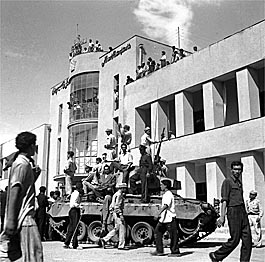
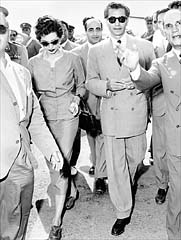
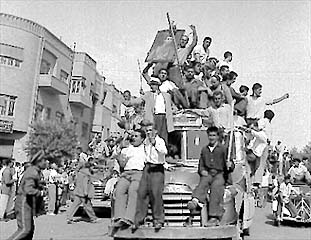

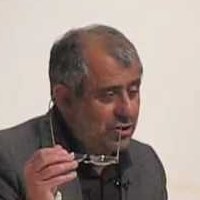


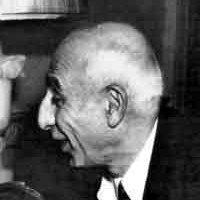
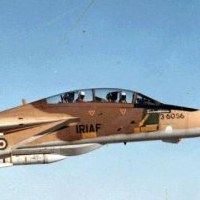




[…] On 12.10.09, In Iran, By Crethi Plethi This article is a follow up on the previous article CIA and Iran in which a theory is unfolded that the CIA instigated the 1953 regime overthrow in Iran. In the […]
RT @CrethiPlethi: #CIA and the rise of radical #Islam in #Iran http://bit.ly/5zkMLd
[…] article about the 1953 coup in Iran. She also disputes the plot theory outlined in that article CIA and Iran. You can also read Ardeshir Zahedi’s response to the NewYorkTimes article here CIA and Iran […]
#CIA and the rise of radical #Islam in #Iran http://bit.ly/5zkMLd
RT @CrethiPlethi: #CIA and the rise of radical #Islam in #Iran http://bit.ly/5zkMLd
[…] The brave and faithful people of Iran too have many questions and grievances, including: the coup d’etat of 1953 and the subsequent toppling of the legal government of the day, opposition to the Islamic […]
[…] Minister (Thu, Dec 10, 2009), CIA and Iran – Zahedi’s Version (Thu, Dec 10, 2009) and The CIA and Iran (Thu, Dec 10, […]